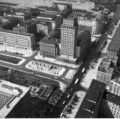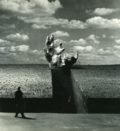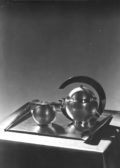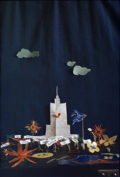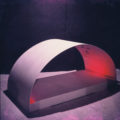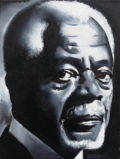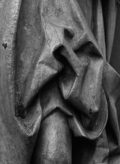
Title
New wave in Zielona Góra: New Art Biennale 1985–1996 Biennale Sztuki Nowej 1985–1996. Zarys wydarzeń
http://miejsce.asp.waw.pl/en/nowa-fala-w-zielonej-gorze-3/
Abstract
The following essay is an introduction to a more detailed research concerning the art festival called New Art Biennale which took place in Zielona Góra (city in western Poland) between 1985 and 1996.
”Slow disappearance” is an introductory part of the essay. It describes the historical context for the Biennale. In 1981, Zielona Góra hosted the last edition of the ”Golden Grape art” exhibitions and symposiums. These art events started in the early 1960s and represented avant-garde and modern experiments. The ”Golden Grape” art festival concluded a very important chapter of the artistic events in the city and the region. The beginning of the 1980s was important not only for Zielona Góra. The introduction of martial law in 1981 dramatically changed social and cultural situation in Poland. The art scene itself went into underground. Exhibitions took place in private studios or flats. Art became more radical (new brutalism, new expression), artists gathered into collectives and sympathised with counterculture circles. For the founders of the New Art Biennale (Zenon Polus and Zbigniew Szymoniak) were building their art event in a very important cultural and socio-political context. Both curators of the Biennale rebuilt the local art scene against political odds as they announced the production of the new art events in Zielona Góra. They not only activated local artists but also initiated a new network for younger generation of artists from the entire country.
”New Wave is coming – New Art Biennale” in the 1980s – this part of the essay describes administrative, production and conceptual background for the first three editions of the New Art Biennale which in 1985 and 1989 became representative for new art tendencies (new expression, new brutalism, performance and video art) and gave a wide presentation of independent and alternative Polish galleries and curatorial manifestations of art dealers and promoters as well as art critics. Those three editions created an opportunity to rebuild the artistic community after the stagnation caused by the martial law. The New Art Biennale was the most complete manifestation of forms of artistic experiments characteristic for contemporary art in the 1980s.
The last part of the essay, ”The end – the 1990s. New Art Biennale”, local turn focuses on the last three editions of the Biennale, which in contrast to the first ones were much more conservative in terms of representation of the new forms of art. Between 1991 and 1996 the New Art Biennale fluctuated between general presentation of new art and some specific performative and sound experiments. In the 1990s the organisers got the chance to open the event to the artists from abroad and because of the city’s vicinity to the German border, the collaboration with German and Dutch art scenes took off. However, those changes could not save the Biennale from advancing marginalisation. In 1996 the New Art Biennale became a history, nonetheless having a significant influence on local artists as well as on the graduate art education in Zielona Góra where from 1985 the Institute of Art and Cultural Studies is held.
This article is only available as an abstract in the English version of our magazine.
Konrad Schiller
Historyk sztuki (absolwent Uniwersytetu Warszawskiego), doktorant w Instytucie Sztuki PAN w Warszawie. Ukończył studia postkolonialne na Goldsmiths University of London. Kurator programu dyskursywnego w U-Jazdowski (CSW Zamek Ujazdowski) w Warszawie. W swoich badaniach skupia się na tematyce kształtowania polityki kulturalnej w Polsce na tzw. Ziemiach Odzyskanych. Autor kilkudziesięciu artykułów oraz tekstów w katalogach wystaw, m.in. w: Elektron. Robert Kuśmirowski (2013); Ynka Shonibare MBE. Wybrane prace (2014); Tropikalizmy (2012). Był konsultantem naukowym projektu i publikacji Przestrzeń społeczna. Historie mówione Złotego Grona i Biennale Sztuki Nowej (2014). Autor książki Awangarda na Dzikim Zachodzie. O wystawach i sympozjach „Złotego Grona” w Zielonej Górze (2015).

